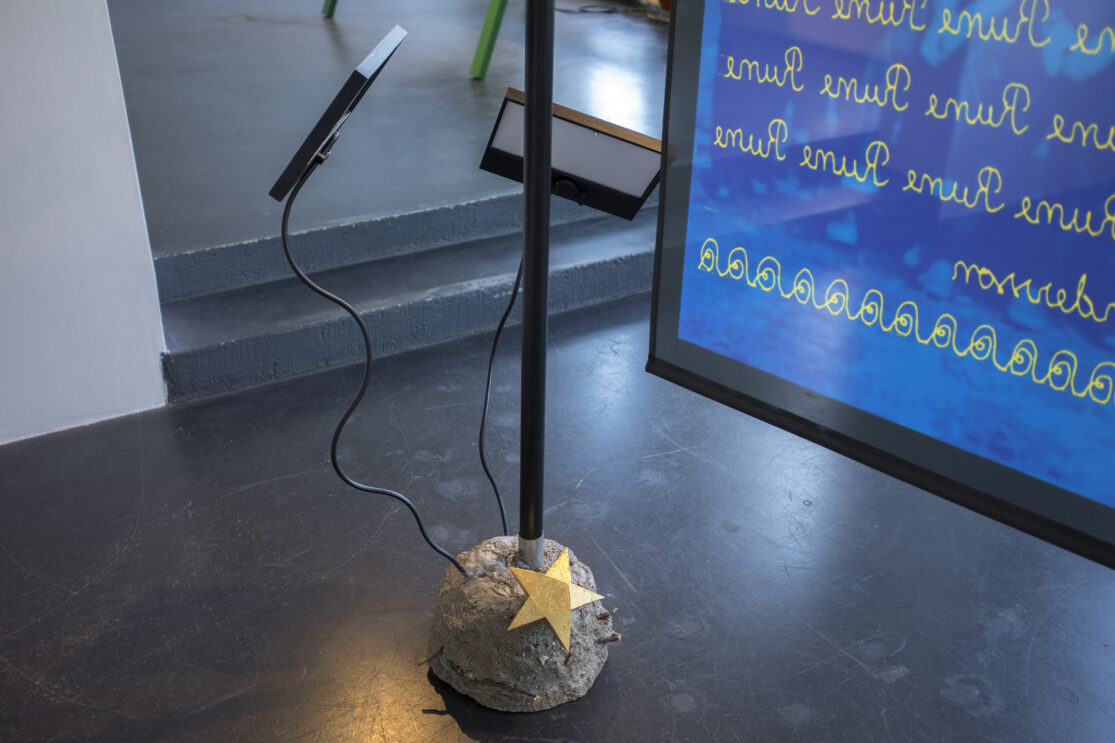Handwriting has Died exhibition at Gallery, Sculptor, Helsinki, 2–25.10 2020.
Invited: Sound artist Shawn Decker
With this exhibition, Jan-Erik Andersson celebrates his artistic career of four decades. He shows new works in which recognizable elements in his art – a narrative and organic artistic idiom and an interest in ornamentation – meet each other. Although his artistic production has followed diverse paths from performance and environmental art and video and media works to spatial installations and architecture, the whole ouevre shows an exceptional logical continuity.
The basic reasons for this lay on the personal level and stem from a severe stuttering, which developed in his childhood. The exhibition Handwriting Has Died honours the style of joint writing which is no longer taught at Finnish primary schools. When a child, youth joint writing was for Andersson an important counterweight to teaching based on language and speech as his communication was undermined by the difficulties with speaking. The meditative rhythm and repetition of handwritten words and the small illustrations he added on the pages created a mental space of his own: “I tried to make the curved lines as smooth and beautiful as possible.”
The installation Handwriting Has Died shows authentic handwriting exercises as well as drawings made by Andersson while attending primary school in the beginning of the 1960s. They bear evidence of a natural and aesthetic approach, possible in childhood, which can offer tools for future creativity and for eventually being able to fully express an own inner world that allows contacts to the surrounding society.
Andersson’s ouevre culminates in the Life on a Leaf house in Hirvensalo, Turku, completed in 2009. Its rich world is visible also in the new works in the exhibition. They reflect his commitment to aim at a total artwork: two-dimensional digital wall works expand into a whole interior consisting of a table, benches, a shelf, and a swing, which all have been created during the planning process of a new house Andersson intends to build for him and his family as a postdoc researcher, the Spruce-house. The concept of a total artwork also includes sound. In 1996 he began collaborative projects with sound artist Shawn Decker, professor at the School of the Art Institute of Chicago, who has made the sound for the Mouse.Green installation.
The Handwriting Has Died theme continues in a group of works called Fire. Our surroundings and our civilisation are burning on many different levels; we can see wildfires threatening also affluent abodes as well as almost buried old cultures of learning, depicted in phantasms of decayed temple ruins. Some of the temples Andersson has assembled digitally, using photos he took of medieval illustrations in the manuscript museum in Jerevan.
Marketta Haila, independent curator, former director of FRAME and Pori Art Museum
This is a documentary video. Parallel with the visual output mainly filmed at the gallery, PhD Marja-Terttu Kvirinta, art historian and critic, discusses the works with me for the audio part. To reach people outside Finland, we decided to make it in English.
The discussion starts with the personal importance of Handwriting as a mental escape place for a stuttering young boy, but also pointing out its connection to experiencing beauty. It ends with the discussion touching on a variety of themes, from modernist design and the nature of the green colour to the fires in the USA and the planning of the new Spruce-house. For Kivirinta a key element in the exhibition folds around the experience of “having the past present, not only today but also tomorrow”. The video is 32 minutes long.






















